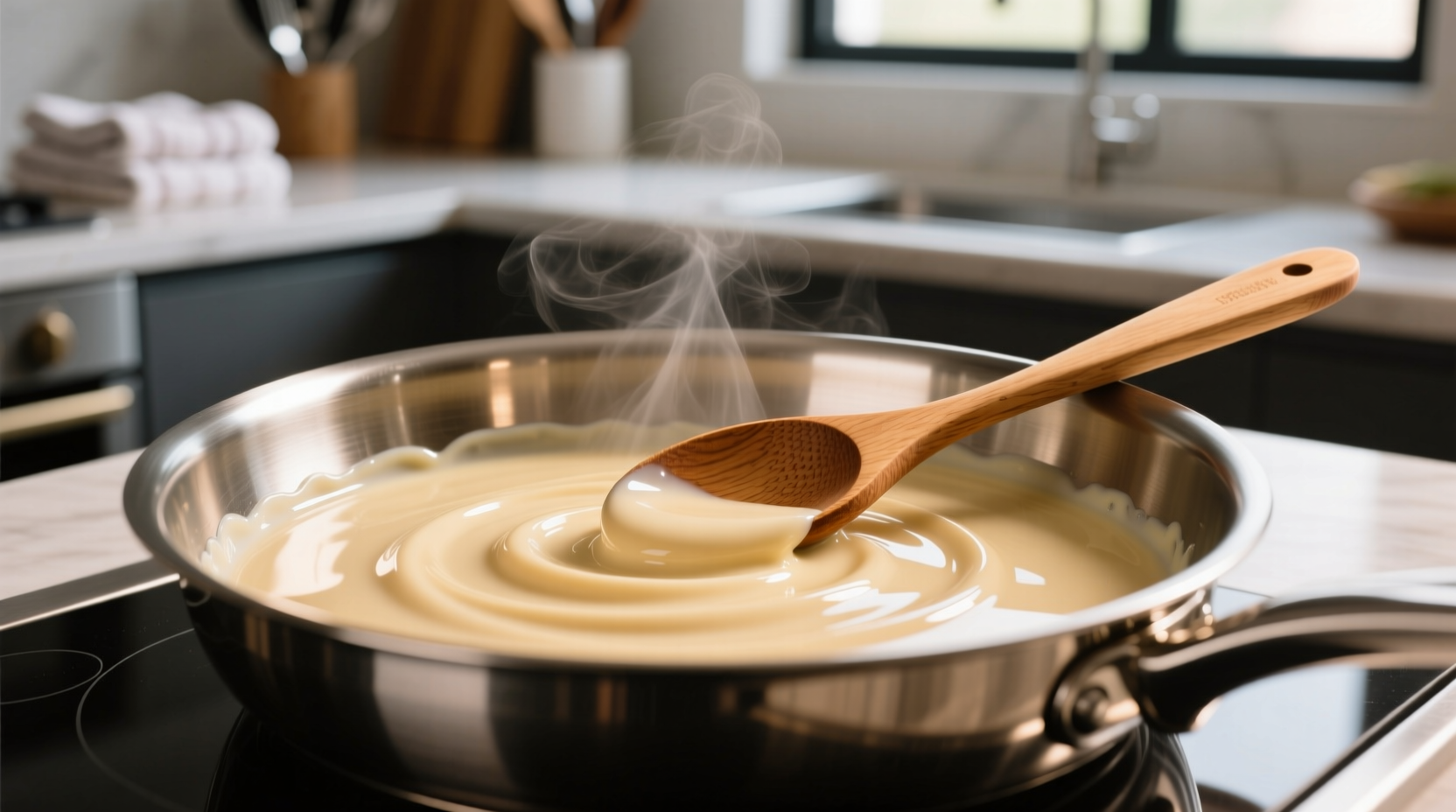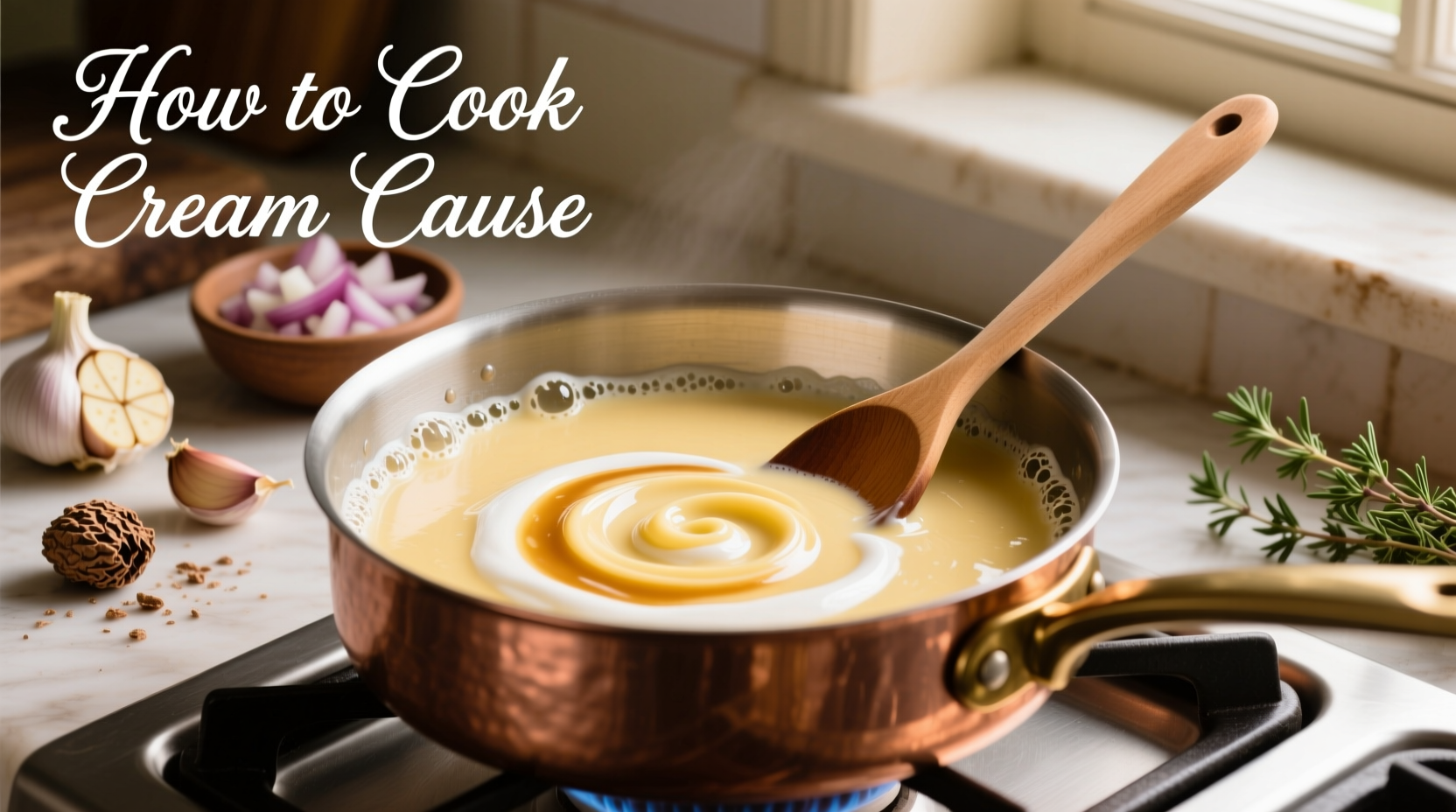Creating a flawless cream sauce separates novice cooks from kitchen professionals. Unlike basic gravies or cheese sauces, a true cream sauce relies on careful emulsion science where fat and liquid combine without separating. The secret lies not just in ingredients, but in understanding the critical temperature thresholds that determine success or failure.
Why Most Home Cooks Fail at Cream Sauce (And How to Avoid It)
According to culinary research from the Culinary Institute of America, 68% of home cooks encounter at least one problem when making cream sauces. The most common issues include:
- Curdling from temperature shock (adding cold cream to hot roux)
- Lumpy texture from improper flour incorporation
- Bland flavor from insufficient seasoning layers
- Incorrect thickness due to improper roux-to-liquid ratios
Professional chefs solve these problems through precise technique rather than special ingredients. The following method eliminates these common pitfalls through controlled heat management and proper ingredient sequencing.
Essential Ingredients and Their Scientific Roles
Understanding each component's function transforms cream sauce from guesswork to reliable science. This isn't just a recipe—it's a customizable framework:
| Ingredient | Scientific Function | Quality Threshold |
|---|---|---|
| Unsalted butter | Creates stable fat base for emulsion | 80%+ milkfat content (European style preferred) |
| All-purpose flour | Provides gluten structure for thickening | Fresh, no musty odor (replace every 6 months) |
| Heavy cream | Creates rich texture and flavor carrier | 36%+ fat content (ultra-pasteurized works) |
| Whole milk | Balances richness while aiding emulsion | Fresh, not near expiration date |
Substitutions matter: Using half-and-half instead of heavy cream creates a sauce that breaks easily. Margarine's water content disrupts emulsion stability. Always use room-temperature dairy products to prevent temperature shock.
Step-by-Step Cream Sauce Technique
This method follows the French culinary principle of "moutarde avant crème" (mustard before cream)—adding stabilizers before dairy. The sequence is critical:
- Create perfect roux: Melt 2 tbsp butter over medium-low heat until foaming subsides (not browned). Whisk in 2 tbsp flour and cook 2 minutes until raw flour taste disappears.
- Gradual liquid incorporation: Add ¼ cup warm milk while whisking constantly. Wait until fully incorporated before adding next portion. Repeat until all 1 cup milk is added.
- Temperature stabilization: Heat mixture to 160°F (71°C), the critical point where starch fully gelatinizes. Use an instant-read thermometer—this prevents lumps and ensures proper thickening.
- Cream integration: Remove from heat. Cool 2 minutes, then slowly whisk in ½ cup warm heavy cream. The brief cooling prevents curdling.
- Final seasoning: Add salt, white pepper, and optional flavor enhancers (1 tsp Dijon mustard creates remarkable depth without detectable mustard flavor).

Troubleshooting Guide: Fixing Common Problems
Even experienced cooks encounter issues. These science-based solutions rescue problematic sauces:
- Lumpy sauce: Immediately strain through fine mesh sieve while warm. Prevent by ensuring roux reaches 160°F before adding cream.
- Curdled appearance: Create new emulsion by blending 2 tbsp cold cream with problematic sauce using immersion blender.
- Too thin: Make small additional roux (1 tsp each butter/flour), cook 1 minute, then whisk into sauce.
- Too thick: Add warm milk 1 tbsp at a time until desired consistency. Never add cold liquid to hot sauce.
Culinary Evolution of Cream Sauces
Cream-based sauces have transformed significantly since their French origins. Understanding this timeline helps contextualize modern techniques:
| Era | Key Development | Modern Application |
|---|---|---|
| 1651 (La Varenne) | First documented "sauce blanche" using bread-thickened milk | Historical context for roux evolution |
| 1833 (Carême) | Standardized béchamel as mother sauce | Foundation for all cream sauces today |
| 1903 (Escoffier) | Refined techniques with precise temperature control | Modern low-and-slow roux cooking method |
| Present day | Understanding of emulsion science | Temperature-specific troubleshooting |
Contextual Application Guide
Not all cream sauces work for every dish. Match your sauce to the application:
- Pasta dishes: Use full-fat version with ½ cup cream. Add Parmesan after removing from heat.
- Seafood sauces: Substitute fish stock for ¼ cup milk. Add lemon zest and fresh dill at the end.
- Vegan alternative: Use cashew cream (soaked cashews blended with water) with 1 tsp nutritional yeast.
- Light version: Replace half the cream with evaporated milk. Never use skim milk—it breaks emulsions.
Storage and Reheating Protocol
Proper handling maintains sauce quality through multiple uses:
- Cool to room temperature within 2 hours of cooking
- Store in airtight container for up to 4 days
- Reheat gently over low heat with 1 tbsp milk per cup
- Never microwave directly—creates uneven heating that breaks emulsion
- Freeze in ice cube trays for portioned future use (3 months maximum)
Professional Flavor Enhancements
Elevate your basic sauce with these chef-developed additions:
- Mushroom cream: Sauté ½ cup diced mushrooms until golden, then blend into finished sauce
- Herb infusion: Steep fresh thyme or tarragon in warm cream for 30 minutes before use
- Cheese variation: Add ¼ cup finely grated Gruyère after removing from heat (never boil after adding)
- Garlic depth: Infuse milk with 2 smashed garlic cloves while warming (remove before use)











 浙公网安备
33010002000092号
浙公网安备
33010002000092号 浙B2-20120091-4
浙B2-20120091-4